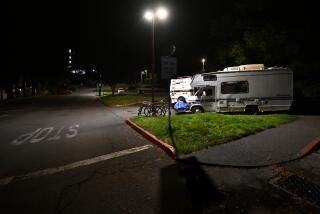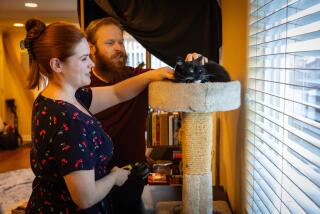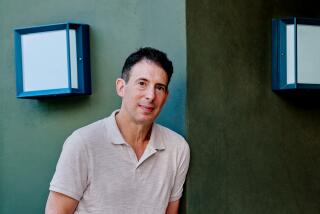‘The Other America’ takes the veil off American poverty
Michael Harrington’s “The Other America: Poverty in the United States” had been in print for about 20 years when I first read it in the early 1980s. I was a young journalist then, and I had found a musty paperback edition in a basement-level used bookstore around the corner from my apartment near the heart of Jamestown, N.Y., where my entry-level newspaper wages were so low that, after rent and student loan payments, I couldn’t afford a car.
I grew up about 90 miles to the east of Jamestown, part of a conservative family in a small conservative village in the northern reaches of Appalachia. The area had forests, deer and poverty in abundance, so I found much to identify with in Harrington’s book, which could well stand as the last hurrah for any pretense that we lived in a nation of compassion.
To mark the 50th anniversary of its publication, Scribner has brought out a paperback and ebook reprint with a new foreword by Harrington biographer Maurice Isserman. It’s chilling to read Harrington’s opening paragraphs half a century later, here in the lee of the Great Recession. While acknowledging that poverty in America was (and is) not the same as poverty in the Third World, Harrington wrote:
“That does not change the fact that tens of millions of Americans are, at this very moment, maimed in body and spirit, existing at levels beneath those necessary for human decency. If these people are not starving, they are hungry, and sometimes fat with hunger, for that is what cheap foods do. They are without adequate housing and education and medical care…. This poverty twists and deforms the spirit. The American poor are pessimistic and defeated, and they are victimized by mental suffering to a degree unknown in suburbia.”
Except that poverty has now moved into suburbia as well.
Harrington’s work didn’t move me to a life of journalism — I was already there, propelled by genetics (my father and grandfather were newspapermen) and by the mixed impulses to explore and to challenge. But Harrington’s book affirmed those impulses and helped mold my world view, an evolution from small-town conservatism to a believer in the power of government and collective action to effect good in the world.
Yet “The Other America” still resonates not for its agenda (to which I subscribe) but for Harrington’s impassioned drive to understand and to explain in clean prose while avoiding academic dryness and preachy self-importance.
Harrington, an unabashed socialist at a time when it carried great costs, didn’t see himself as a neutral observer of the world — the role of the journalist. He was an agitator with a pen, and he wrote about the invisibility of poverty in America with such engagement that he stirred public debate. In fact, “The Other America” made it to the presidential nightstand and is generally credited with propelling firstJohn F. Kennedyand thenLyndon B. Johnsonto wage a war on poverty.
Unfortunately, that war has gone about as well as the ones we’ve conducted against drugs and in Iraq and Afghanistan.
Fifty years on, the writing still sings as Harrington related his travels from the nation’s urban cores to the isolated lives of the rural poor, where natural beauty obscured the deep poverty in the Appalachians. Similarly, the lights and architecture of urban centers — this was before white flight altered that landscape — blinded motorists to the deep poverty in the tenements and slums they passed on the way to a night out on the town.
For a time, Harrington’s book made the nation look at that poverty. But good intentions withered as the nation faced yet another war (Vietnam), cynicism toward government grew and the very words Harrington used to define the problem slowly became the roots of the conservative argument against government action. As Isserman points out in his introduction, the “vicious circle of poverty” Harrington identified — impoverished and uneducated parents raising children to similar futures in environments of ill-health, poor schools and limited job opportunities — morphed into a “culture of poverty.” The poor can help themselves, they choose to live like that, is the curious reasoning, so it is a waste to use the power of government to relieve the desperate lives of our fellow citizens.
And so in this modern age of ostracism, we again ignore the poor. When Harrington wrote his book, he counted as many as 50 million Americans living in poverty (this was before the federal government established the current threshold formula). The U.S. census now counts some 46.2 million people living on less than $22,314 a year for a family of four, in a nation with a median household income of $49,445.
After all these years, all these booms, busts and economic scandals, to be born poor today is just as much a ball and chain as it was then. As Harrington wrote half a century ago, “[T]he American poor are one of the greatest scandals of a society that has the ability to provide a decent life for every man, woman, and child.”
Ability is one thing. Will, as we know, is something else entirely. What we need now is a new Harrington, someone with the clarity of eye and the sharpness of pen to make us see once again.
Irvine-based writer Martelle is the author of “Detroit: A Biography.”
More to Read
The biggest entertainment stories
Get our big stories about Hollywood, film, television, music, arts, culture and more right in your inbox as soon as they publish.
You may occasionally receive promotional content from the Los Angeles Times.







